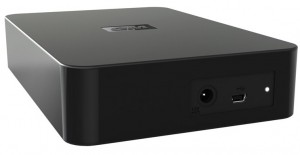Thailand Floods Causing Electronics Drought
 The economic force known as Supply and Demand has recently reared its ugly head due to the flooding in Thailand, and as tragic as the flooding is for those living there, its effects have been felt worldwide, especially in the consumer markets.
The economic force known as Supply and Demand has recently reared its ugly head due to the flooding in Thailand, and as tragic as the flooding is for those living there, its effects have been felt worldwide, especially in the consumer markets.
Thailand is host to many key factories and manufacturing plants for companies like Toshiba, Western Digital, Sony, and Nikon (just to name a few). All of these companies have had to halt production in Thailand due to flooded facilities which has led to product shortages for this holiday season. Some products have been hit harder than others, and fulfilling Christmas lists this year may be difficult.
Hard drives have been the most affected by the floods. Nearly every major hard drive manufacturer uses Thailand facilities extensively and there have since been reports of worldwide shortages. Even though you can still find them on shelves, the effects of Supply and Demand are very clear.
 Back in October, before the flooding became severe, high capacity external hard drives could be found for well less than $100, but have since skyrocketed closer to $200. The 2TB Western Digital Elements Desktop hard drive is a perfect example. In October, you could buy it at a mere $89, but with news of the flooding and shortages, it promptly jumped to $150 and then $180. To make matters worse, most retailers have started limiting hard drive purchases to one per customer. Internal hard drives and laptop drives are affected as well.
Back in October, before the flooding became severe, high capacity external hard drives could be found for well less than $100, but have since skyrocketed closer to $200. The 2TB Western Digital Elements Desktop hard drive is a perfect example. In October, you could buy it at a mere $89, but with news of the flooding and shortages, it promptly jumped to $150 and then $180. To make matters worse, most retailers have started limiting hard drive purchases to one per customer. Internal hard drives and laptop drives are affected as well.
All is not lost, however. Solid State Drives have been largely unaffected by the flooding. The problem with Solid State Drives has always been the price, typically $1-$2 per GB compared to $0.04 per GB of a traditional hard drive. But the Solid State Drive market has become increasingly competitive, bringing prices down. Per GB, they are still considerably more expensive than Hard Drives, even at their currently inflated prices, but you also get considerably more performance.
 Also hit quite hard are digital cameras, especially digital SLRs. Nikon’s entry-level SLRs, the D3100 and D5100, have become hard to find. Its high-end D7000 is experiencing shortages as well. Sony, though, has certainly been hit the hardest. Having just launched its new NEX and Alpha series cameras, there were very few on the market to begin with. The flooding has rendered these new cameras almost impossible to find. The NEX-7, one of the most highly anticipated cameras of the year is nowhere to be found and likely won’t be available until early next year.
Also hit quite hard are digital cameras, especially digital SLRs. Nikon’s entry-level SLRs, the D3100 and D5100, have become hard to find. Its high-end D7000 is experiencing shortages as well. Sony, though, has certainly been hit the hardest. Having just launched its new NEX and Alpha series cameras, there were very few on the market to begin with. The flooding has rendered these new cameras almost impossible to find. The NEX-7, one of the most highly anticipated cameras of the year is nowhere to be found and likely won’t be available until early next year.
Most laptop manufacturers do not rely on Thailand facilities to assemble their products, but a few, like Toshiba, do. The hard drive shortage is affecting the laptop market the most. With the increased demand, laptop manufacturers have had to pay more for their hard drives as well, resulting in higher prices down the line. Overall, laptops haven’t been hit that hard, with typical price hikes only around $60 to $90. Many of the larger companies, like Dell and Apple, can afford to absorb these costs themselves.
With all of these abrupt price hikes, it’s wise to research the price history before making any big purchases, especially when buying a laptop. As for hard drives, with their prices so high and availability so sparse, you may want to consider waiting for the market to return to normal. Even though they don’t feel quite as personal, gift cards are a great alternative for those items that just aren’t available. And consider keeping with the holiday spirit and contributing to the relief efforts in the flooded regions.


